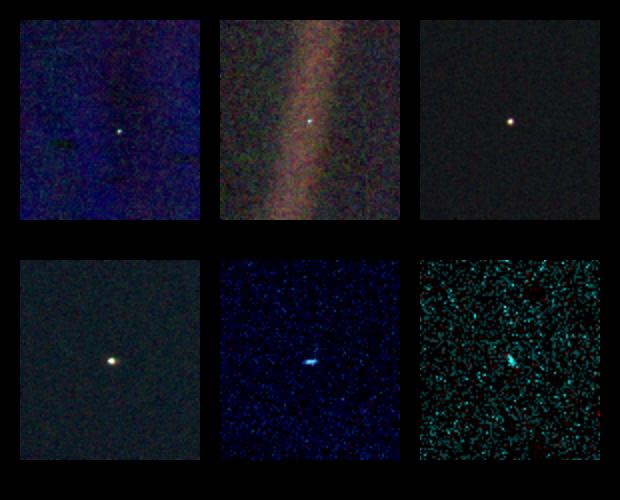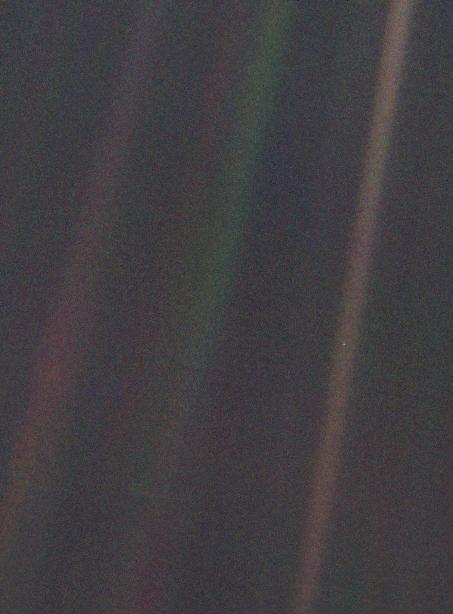Happy Birthday, 'Pale Blue Dot!' Famous Space Photo Turns 25

One of history's most iconic photos turns 25 years old Saturday (Feb. 14).
On Feb. 14, 1990, NASA's Voyager 1 spacecraft took a family portrait of the solar system, capturing Neptune, Uranus, Saturn, Jupiter, Venus and Earth — which showed up as a "pale blue dot" — in a single view.
The famous image "continues to inspire wonderment about the spot we call home," Voyager project scientist Ed Stone, of the California Institute of Technology in Pasadena, said in a NASA statement. [5 Facts About NASA's Far-Flung Voyager Spacecraft]
The late astronomer Carl Sagan referenced and further immortalized the photo in the title of his 1994 book, "The Pale Blue Dot: A Vision of the Human Future in Space" (Random House). Sagan was part of the Voyager imaging team when the picture was taken.
Voyager 1 took the photo while located 40 astronomical units (AU) from Earth, NASA officials said. (One AU is the distance from Earth to the sun — about 93 million miles, or 150 million kilometers.)
Only three of the solar system's then-recognized nine planets failed to find a spot in the picture: Mars was too dark; Mercury was too close to the sun, and Pluto was too dim. (The International Astronomical Union demoted Pluto to "dwarf planet" status in 2006, in a decision that remains controversial today.)
Voyager 1 and its twin, Voyager 2, launched a few weeks apart in 1977 to conduct an unprecedented "grand tour" of the outer solar system. Together, the two probes gave researchers some of their first good looks at Jupiter, Saturn, Uranus and Neptune, as well as the moons of those big, gaseous planets.
Breaking space news, the latest updates on rocket launches, skywatching events and more!
Both spacecraft then kept right on flying. In August 2012, Voyager 1 became the first man-made object to reach interstellar space; Voyager 2, which took a different route through the solar system, should achieve the milestone soon as well.
The series of images that comprise the "pale blue dot" portrait were the last that Voyager 1 took. The probe's handlers turned Voyager 1's camera off to retask the computer controlling the camera for other purposes.
"After taking these images in 1990, we began our interstellar mission. We had no idea how long the spacecraft would last," Stone said in the statement.
Voyager 1 is now about 130 AU from Earth. If the probe tried to photograph Earth right now, the planet would appear about 10 times dimmer than in did back in February 1990, NASA officials said.
Follow Mike Wall on Twitter @michaeldwall and Google+. Follow us @Spacedotcom, Facebook or Google+. Originally published on Space.com.

Michael Wall is a Senior Space Writer with Space.com and joined the team in 2010. He primarily covers exoplanets, spaceflight and military space, but has been known to dabble in the space art beat. His book about the search for alien life, "Out There," was published on Nov. 13, 2018. Before becoming a science writer, Michael worked as a herpetologist and wildlife biologist. He has a Ph.D. in evolutionary biology from the University of Sydney, Australia, a bachelor's degree from the University of Arizona, and a graduate certificate in science writing from the University of California, Santa Cruz. To find out what his latest project is, you can follow Michael on Twitter.


